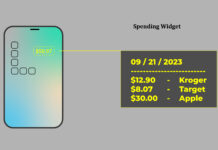[Candy Crush Saga is one of the first apps to generate over $1 billion from in-game purchases. Source: Business of Apps]
Introduction:
Video game companies use behavioral psychology to highly stimulate users before hitting them up to make in-game purchases. This monetization system is so successful, it’s now utilized in all classes of video games. Studies show the likelihood of spending in-game has nothing to do with time spent playing or frequency of play. This means that video game addiction isn’t the only concern for gamers and parents of gamers. Most of the population won’t meet the criteria for addiction. However, anyone who plays video games is susceptible to impulsive or unplanned spending and overspending in-game.
The industry calls these in-game purchases “microtransactions” because a single virtual item is often relatively low in price, but often they are bundled together in “value” packs or games require players to purchase them repeatedly in order to meaningfully advance in the game.
These microtransactions can easily add up to hundreds, thousands and—in at least one extreme case—a million dollars. The most vulnerable to these manipulative monetization tactics are children and teenagers because they naturally lack impulse control at their stage of maturity.
People with a history of problem gambling may also be at risk. However, anyone who plays video games is susceptible and that’s a lot of people. The video game industry now generates more money than the global movie, music and North American sports industries combined. The World Championship Finals for League of Legends attracted twice as many viewers as Super Bowl 52. And Netflix says Fortnite is a bigger threat to their business than HBO. So, learning to protect yourself and your bank account from predatory monetization tactics in games is just responsible consumerism. Read on to learn how.
Personal Reflection:
This article provides an analysis around in-game purchases. The author mentions many real-life issues, such as disputes over in-game purchases, which has been a hot topic over the years. There have been many reports of minors spending large amounts of money using in-game purchases without parental permission. Personally, I think that the in-game purchase feature of free games is not conducive to the development of minors’ money values, and may in some way impact the indie game – if it is only necessary to design a simple game mechanics, using the “free” gimmick to trick players into spending, then who will be serious about developing a good game? Fortunately, the level of indie game production in these two years is still online. However, in the status quo, we know that independent games are not as profitable as handheld games, will there be capitalists to invest a lot of R&D funds into independent games? This article triggered a bunch of thoughts for me. The future of the game industry makes me confused.
Reference:
Markle, T., & Kennedy, B. (2021, November 23). In-game purchases: How video games turn players into payers – Digital Media Education. Digital Media Treatment & Education Center. Retrieved January 23, 2023, from https://digitalmediatreatment.com/in-game-purchases/




